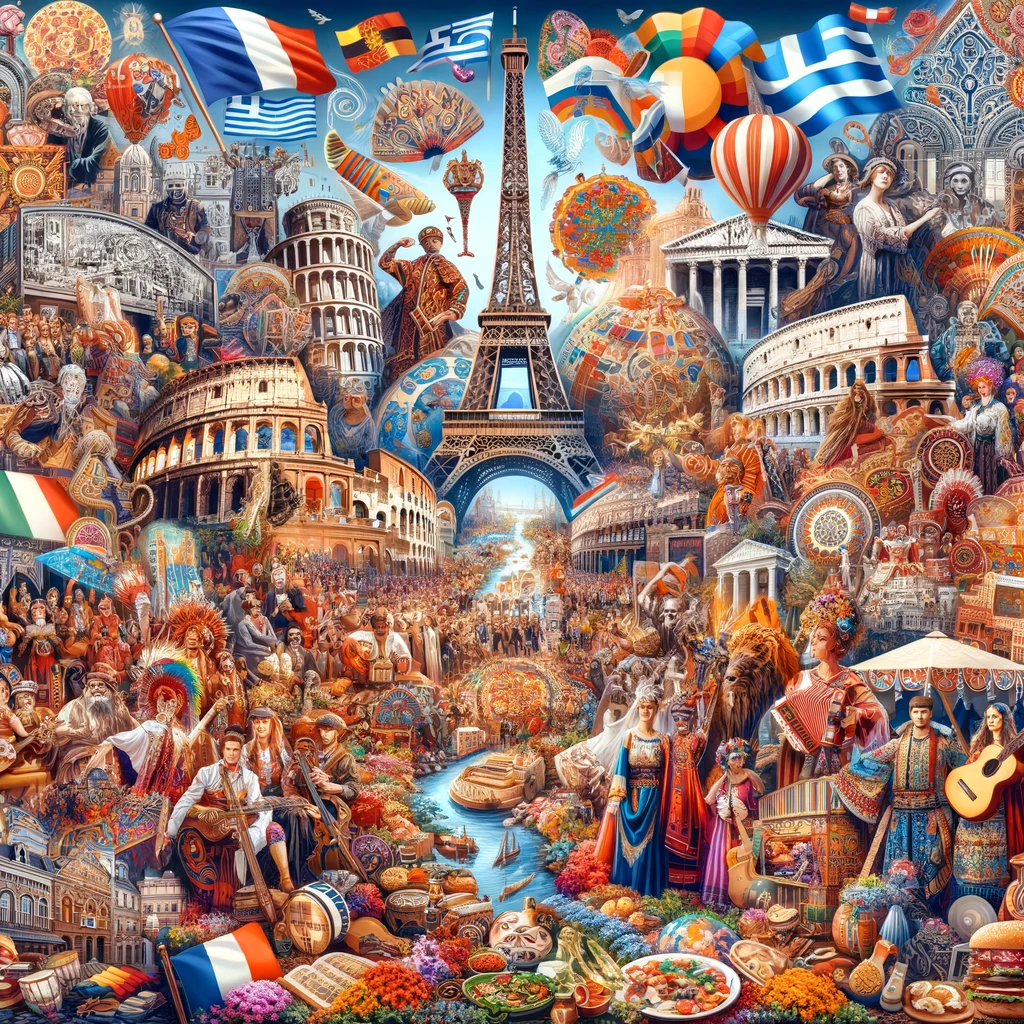Europe: A Tapestry of Culture, History, and Diversity

Europe: A Tapestry of Culture, History, and Diversity
Europe, the cradle of Western civilization, evokes images of medieval castles, Renaissance art, and bustling cosmopolitan cities. Spanning a mosaic of landscapes, languages, and cultures, the continent stands as a testament to human ingenuity, resilience, and innovation. From the snow-capped peaks of the Alps to the sun-kissed shores of the Mediterranean, Europe is a tapestry woven from the threads of its rich history, diverse heritage, and boundless creativity.
At the crossroads of continents and civilizations, Europe has been shaped by millennia of human migration, conquest, and exchange. The ancient Greeks laid the foundations of democracy and philosophy, while the Romans built an empire that stretched from Britannia to the banks of the Tigris. The Middle Ages witnessed the rise of feudalism, the spread of Christianity, and the flowering of Gothic architecture, culminating in the Renaissance, a golden age of art, science, and exploration.
Yet, Europe's history is not merely a chronicle of triumphs; it is also marked by periods of conflict, upheaval, and transformation. The Protestant Reformation shattered the unity of Christendom, sparking religious wars that ravaged the continent. The Enlightenment ushered in an era of intellectual ferment, challenging traditional authority and paving the way for modernity. The scars of two world wars serve as a sobering reminder of the fragility of peace and the human cost of division.
Today, Europe stands united in diversity, a patchwork quilt of nations bound together by shared values and aspirations. The European Union, born from the ashes of war, has become a beacon of peace, prosperity, and cooperation, fostering economic integration, political stability, and cultural exchange. From the Schengen Area, where borders dissolve and travel is seamless, to the Eurozone, where currencies converge and commerce flourishes, Europe has embraced the ideals of unity in diversity.
Yet, beneath the veneer of unity lie the fault lines of identity, ideology, and inequality. The rise of populist movements, fueled by fears of globalization and immigration, threatens to unravel the fabric of European solidarity. Economic disparities between North and South, East and West, persist despite efforts to foster convergence and cohesion. Cultural tensions between tradition and modernity, secularism and religion, underscore the challenges of forging a common European identity.
Nevertheless, Europe remains a vibrant tapestry of culture, history, and diversity, a continent where the past converges with the present and the future unfolds with boundless possibility. From the cobblestone streets of Prague to the canals of Venice, from the fjords of Norway to the vineyards of France, Europe invites exploration, discovery, and wonder. Whether marveling at the masterpieces of the Louvre, savoring the flavors of Tuscan cuisine, or dancing to the rhythms of flamenco, visitors to Europe are greeted with a kaleidoscope of experiences that resonate with the soul.
In conclusion, Europe is more than a geographical entity; it is a state of mind, a tapestry woven from the fabric of its rich history, diverse heritage, and boundless creativity. As we journey through its landscapes and linger in its cities, let us embrace the spirit of Europe - a spirit of curiosity, openness, and unity in diversity. For in Europe, the past is ever-present, the present is ever-changing, and the future is ours to shape.
- Arts
- Business
- Computers
- Giochi
- Health
- Home
- Kids and Teens
- Money
- News
- Recreation
- Reference
- Regional
- Science
- Shopping
- Society
- Sports
- Бизнес
- Деньги
- Дом
- Досуг
- Здоровье
- Игры
- Искусство
- Источники информации
- Компьютеры
- Наука
- Новости и СМИ
- Общество
- Покупки
- Спорт
- Страны и регионы
- World


